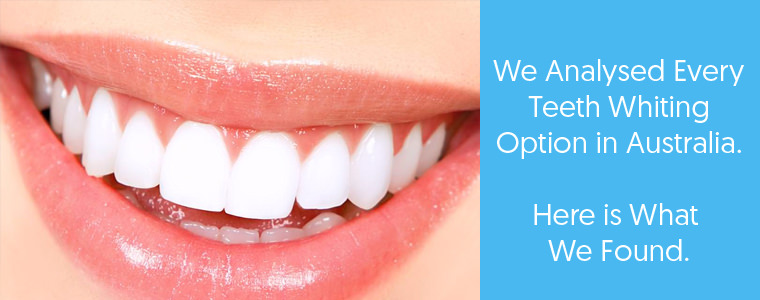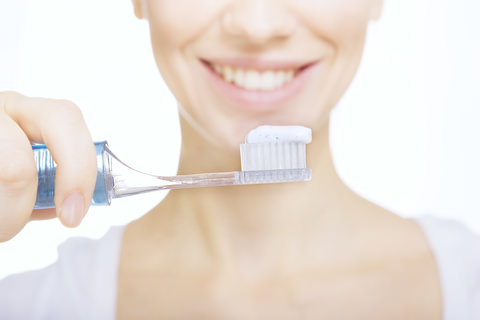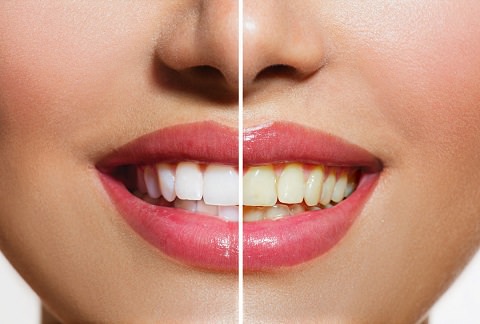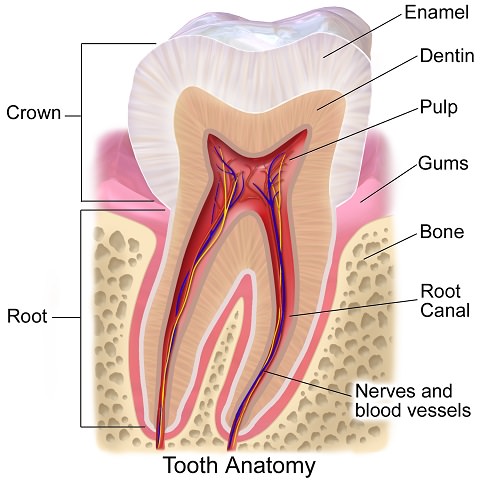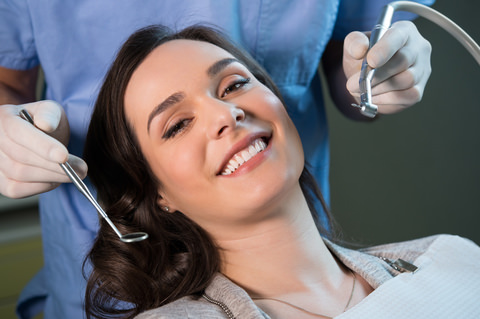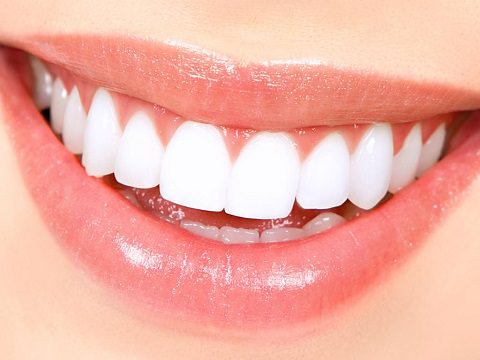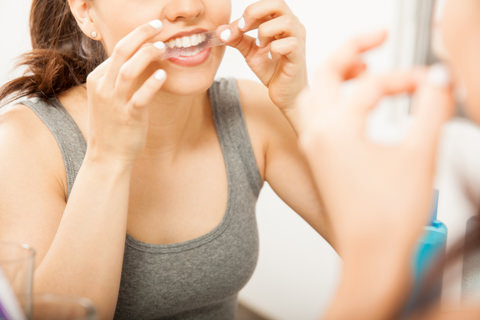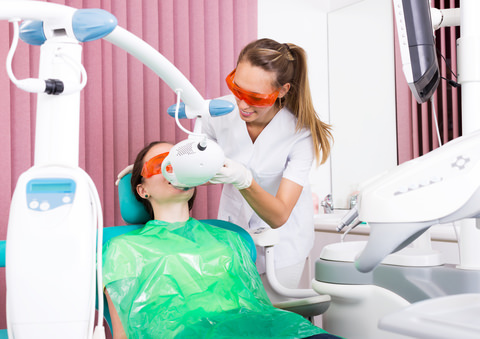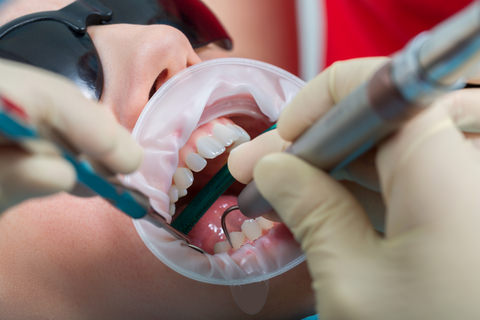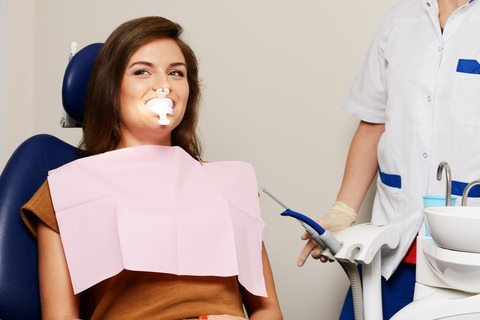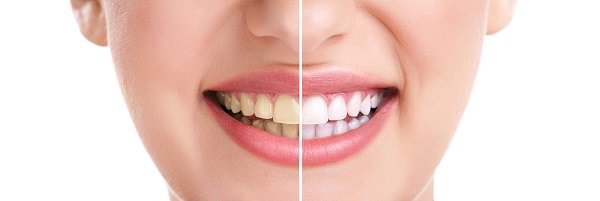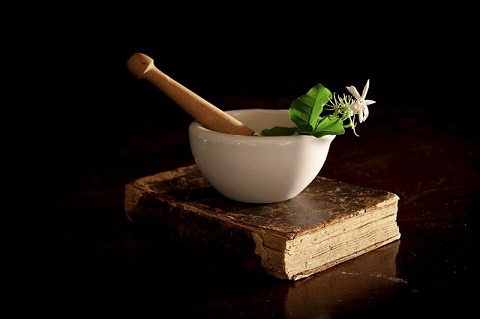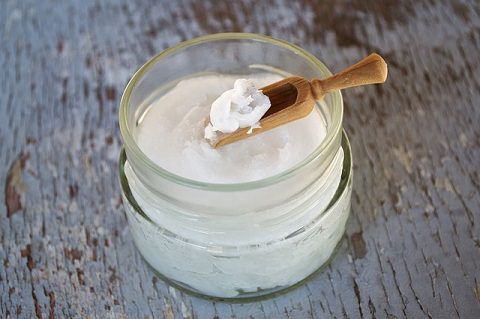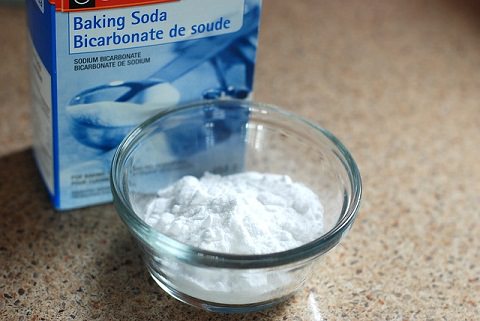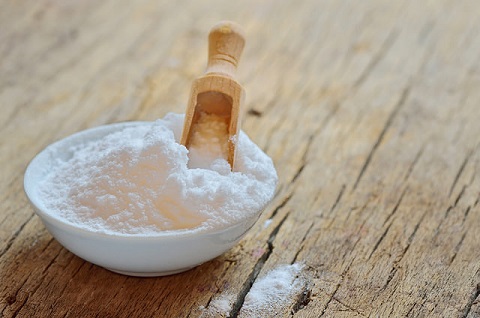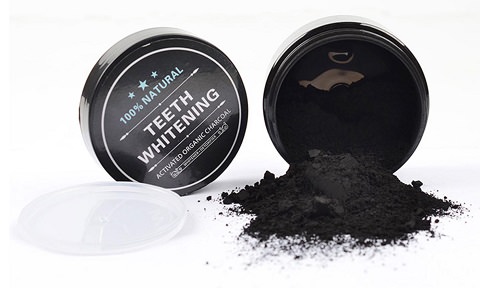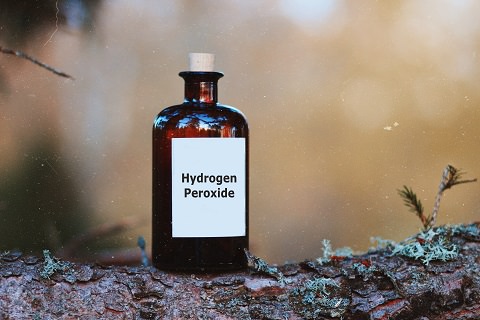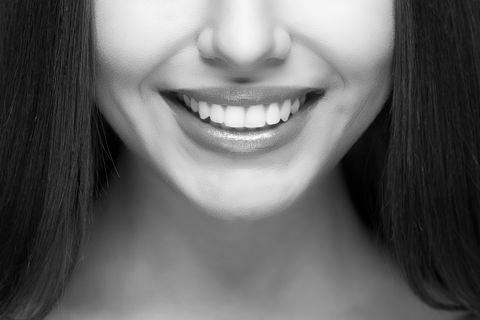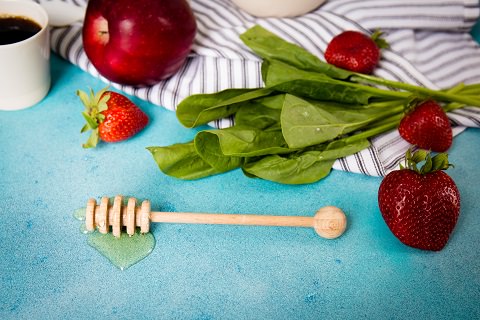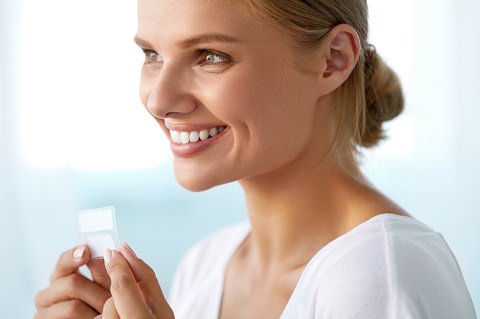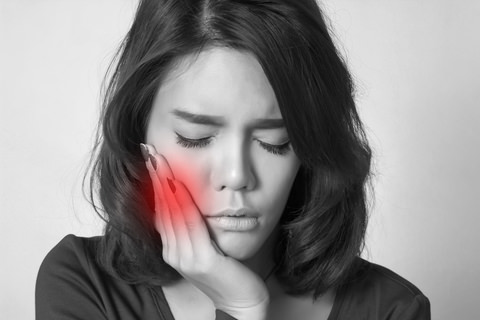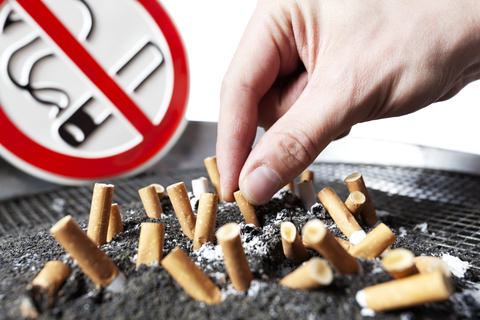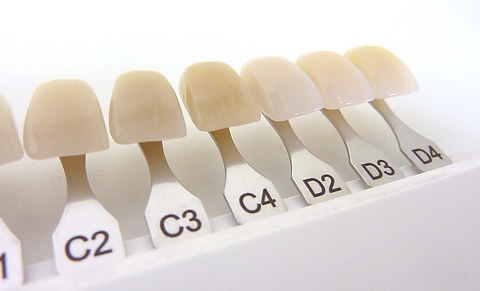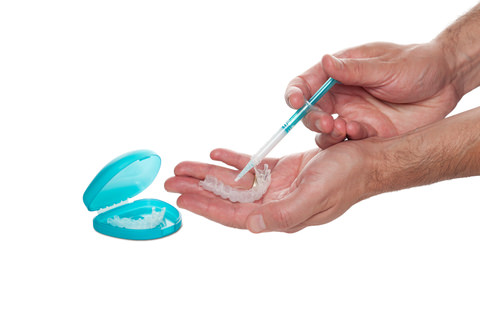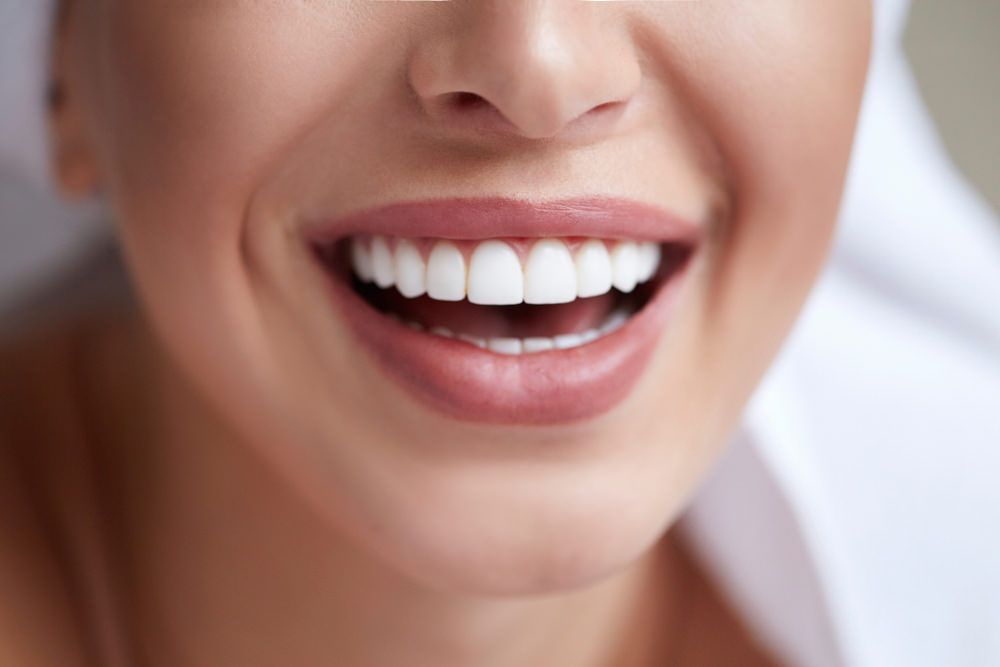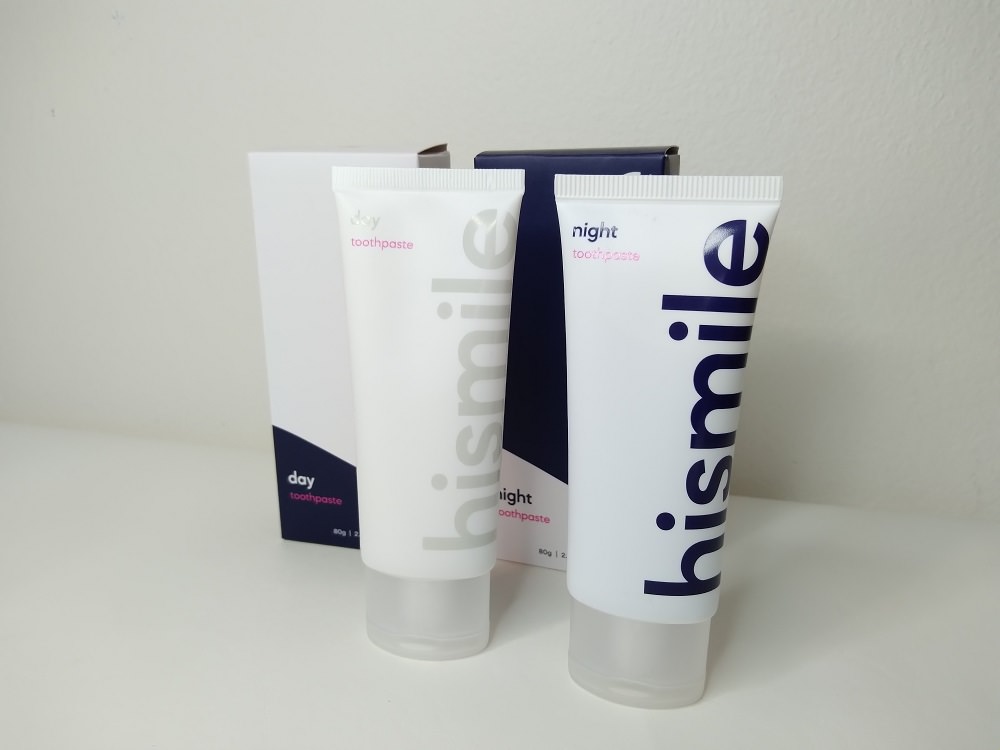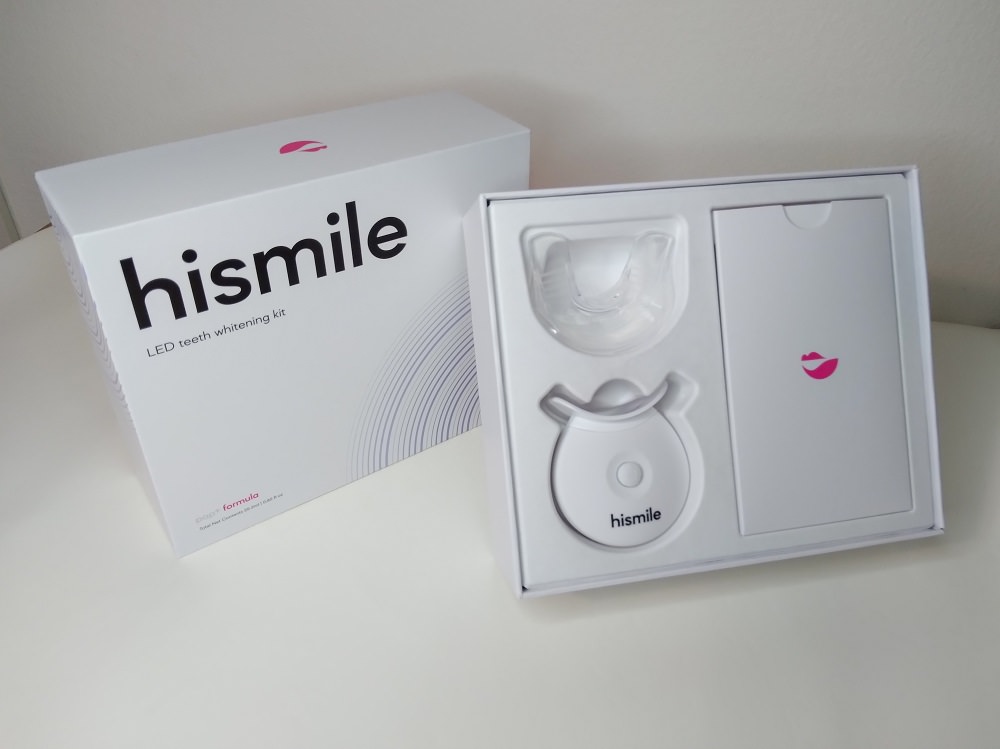Your Teeth Whitening Guide
The teeth whitening industry has gained huge popularity in recent years.
There is a tonne of products and services out there waiting for you to try.
But what really is the ‘best’ teeth whitening for you?
The good news is that we are living in a time where technology is progressing, and knowledge can unleash opportunities that we didn’t know were possible.
Before deciding on the best particular whitening treatment for you, let’s look at some quick facts.
- Abrasive Applications
- Chemical Solutions
Applications that use abrasive elements refer to anything you must rub, polish or brush on to your teeth.
Toothpaste or natural remedies such as charcoal products are good examples of this.
If you opt for a chemical solution, the typical bleaching formula is known as hydrogen peroxide, or HP for short.
It’s found in a lot of teeth whitening products in Australia.
Even some of the natural forms of teeth whitening, like Baking Soda, often use a small amount of HP added to the mix.
- Intrinsic
- Extrinsic
Intrinsic Stains
This type of stain relates to stain from within your tooth.
The inner part of your tooth, affecting the dentin which is located just underneath your enamel.
Because the outer coating of your tooth (called enamel) is translucent in nature when intrinsic stains occur they are likely to be easily noticed.
Intrinsic stains usually first happen at a younger age where your teeth are developing and growing.
Intrinsic discolouration can occur due to the following reasons:
- Exposed to too much fluoride during early childhood causing a condition known as Dental Fluorosis
- Have taken too many tetracycline antibiotics at a young age
- Trauma-related accidents to your teeth such as hitting your mouth with a cricket ball
- A genetic disorder of tooth development such as Dentinogenesis Imperfecta
If you have developed intrinsic staining, there this really only one tooth whitening treatment option available to you.
And that is Professional ‘In-Office’ Whitening.
Most dentists will also offer a ‘Take Home’ Kit which is still has a much higher level of hydrogen peroxide than a DIY product.
Everyone has a different outcome when it comes to teeth whitening.
We can’t paint everyone with the same brush, and each of us can and often do have widely varying results from the same tooth whitening product.
So it’s worth visiting your dentist and getting a proper diagnosis of the state of your teeth to confirm if any tooth discolouration is intrinsic or extrinsic.
Making this decision will likely give you a clear understanding of your options and what treatments may be suited and available to you.
Extrinsic Stains
This type of stain occurs on the surface of your tooth and directly affects your enamel.
Lifestyle choices typically cause extrinsic staining to your teeth.
You can reverse this type of staining, pretty easily.
Polishing or using chemical forms of teeth whitening treatments will often work well in this instance.
However, we want to be careful about not using a polishing or abrasion technique too much.
We don’t want to wear away too much enamel, exposing dentin below which can be yellowish in colour.
Though just like intrinsic stains, we all are different and can have somewhat contrasting results.
- Coffee
- Tea
- Red wine
- Flavoured drinks
- Food that stains easily
- Smoking
The first one on the list is a big one, we know.
Giving coffee up might not be an option for you.
So here is a simple 3 step routine that often reduces the buildup of coffee stains, but still lets you enjoy the ‘Cap or Flat White’ you love.
3 Step Coffee Routine
- Enjoy your morning coffee.
- Once finished, drink a glass of water to rinse out any leftover coffee that’s still in your mouth.
- Brush your teeth with a soft toothbrush and gentle toothpaste.
It’s simple but effective in reducing some of these extrinsic stainings that can occur.
The first 4, or as we like to say the “‘big 4”, are your standard forms of teeth whitening.
Whitening Toothpaste
Toothpaste that whitens your teeth will rely on a mixture of abrasive elements and Hydrogen Peroxide to polish, scrub and (potentially) whiten surface stains that you may have.
There are plenty of whitening toothpaste products available in Australia.
Most brands have multiple variations on offer, some with Hydrogen Peroxide and some without.
Hydrated Silica which is also used in whitening toothpaste, helps the whitening process, again through abrasion.
Here’s our list of the most popular teeth whitening toothpaste products sold in Australia:
Most supermarket chains like Coles or Woolworths will sell an array of brands that claim to offer beautiful results.
The fact is, unfortunately, whitening toothpaste has limitations in whitening your teeth in the first place.
The reason for this is the formula only ever has a small amount of hydrogen peroxide which is the active ingredient that whitens your teeth.
However, I recently reviewed and tested two different whitening kinds of toothpaste that pleasantly surprised me.
I tested Oral B 3D Luxe Glamorous White and Colgate Optic White Stain-less White.
My reviews highlight the advantages and disadvantages of both products.
Generally, with most things, there are pros and cons.
Let’s check out the positives and negatives of whitening toothpaste.
Advantages of Whitening Toothpaste
Easy – This type of whitening treatment is straightforward to apply
Cheaper – The price is usually very affordable in terms of the range of products that are available
Quicker – You’re able to use this product in the comfort of your own home, so it’s really convenient and much quicker than most other types of whitening treatments available.
Disadvantages of Whitening Toothpaste
Teeth Whitening effectiveness – It won’t give you amazing results, outside of a good polished clean by your dentist.
Possible Damage – Abrasives such as Hydrated Silica can potentially damage your enamel if overused or misused.
Additional Cost – Picking a standard toothpaste and brushing regularly will most likely do the same job as whitening toothpaste. So the additional cost might not be worth the outlay
Toothpaste should always be an essential part of your oral hygiene routine, whether you choose to whiten your teeth or not.
We would recommend caution when opting to use this type of teeth whitening option.
You don’t want to mess around with your enamel, especially as you age.
Sensitivity can raise its ugly head and cause ongoing problems for you.
There might be better ways to whiten your teeth; let’s keep going!
Some of the most popular kinds on the Australian market are:
- Crest 3D Whitening Strips
- Oral-B 3D White Luxe Advanced Seal Whitening Treatments
- Oral-B 3D White Whitestrips
- CleverWhite Dissolving Whitening Strip
These have been praised and adored for some time now and their results seem to be impressive.
Researching online, you’ll find glowing reviews and mostly happy customers.
Advantages of Whitening Strips
Value for Money – They are affordable and reasonably priced. Great value for your money!
Easy to Use – Instructions for most types of strips are straightforward to understand and apply to your teeth.
Fast Results – One of the quickest forms of whitening treatments available to get white and bright teeth that you desire
Disadvantages of Whitening Strips
Sensitivity – Hydrogen Peroxide can cause sensitivity issues for some people
Strip Access – Strips don’t reach all teeth, it is selective to a degree.
Overuse – With the ease of this product there is a possibility you’ll overuse it. Follow the instructions and guidelines by the manufacturer.
For short-term use, whitening strips provide an easy and affordable way to whiten your teeth.
Most strips will use increased levels of HP (Hydrogen Peroxide). In our opinion, this provides better results than whitening toothpaste.
One important point to mention is, always follow instructions and timeframe guidelines on the product’s packaging.
It is a somewhat addictive way to whiten your teeth and easy to overdo which could cause permanent damage to your teeth.
Always be sure to check a products guidelines and recommendations, we can’t stress this enough!
Teeth Whitening Kits
Whitening kits are probably the most favoured treatment option at the moment.
With endorsements by celebrities on Instagram and other social media channels, it’s easy to understand the trend that has occurred with these whitening kits.
But are they as good as what we’ve been lead to believe?
Some products are definitely better than others and price can vary a lot.
Here are our top 13 most popular take home, teeth whitening kits in Australia at the moment, in no particular order:
- HiSmile Teeth
- Advance Whitening
- Pearly Whites
- Brighter White
- Perfect Whitening
- Smile Bright White
- Kapow Smiles
- Bondi Smile
- Whiter Smile
- Dentitex (Aldi)
- WhiteGLO
- TrySnow
- SmilePro Worldwide
I’ve reviewed most of these whitening kits and some were much better than others.
Click on the buttons below to read my reviews on each of these whitening kits.
You’ll most likely see brands promoting 6% Hydrogen Peroxide or up to 18% Carbamide Peroxide.
These are the two options most brands will opt to use as their whitening agent of choice.
What is the difference between Hydrogen Peroxide and Carbamide Peroxide?
There isn’t any real difference in quality or results and they are closely related.
Carbamide Peroxide (CP) is usually a ratio of 3:1 to that of Hydrogen Peroxide (HP).
You’ll most likely see brands promoting 6% Hydrogen Peroxide or up to 18% Carbamide Peroxide.
Australian law states that teeth whitening that is applied by yourself or by someone that is not a licensed dentist can only use up to 6% HP.
So brands that state that their products are ‘professional dentist strength’ is simply not telling the truth.
Results will only ever be as good as what 6 % HP can give you, no more.
Advantages of Whitening Kits
Easy to use – Most brands come in a sweet little box with everything you need to get started.
Maximum levels whitening agent – Most brands will use the highest amount of HP or CP allowed by Australian law.
Your time – You’re able to use this treatment type in the comfort of your own home, at any time that suits you.
Price – Even though they are usually more expensive than strips and toothpaste, they are priced well for the results they provide.
Online and Delivered – Most companies will send them straight to your door free of charge or for a small fee. Online websites make it really easy to choose what kit you want and have it delivered.
Guarantees – Some websites/brands offer a 100% money-back guarantee. Which is comforting to know.
Disadvantages of Whitening Kits
Can be expensive – It is wise to shop around and look for deals that seem to pop up a lot.
Amount of HP – A maximum of 6% Hydrogen Peroxide or 18% Carbamide Peroxide can only ever be used in kits. This reduces the amount of whiteness you’re able to achieve.
Mostly only online – This can be a pro or a con. If you are a person who likes to see what you are buying, kits might not be for you.
Sensitivity – You may find that sensitivity could be an issue for you. HP and CP agents are known to cause sensitivity in some cases. This can make having a cold glass of water painful afterwards.
Not custom-fitted – Most products will have a standard mouthguard that the whitening gel is applied to and then inserted into your mouth. This can leave room for leakages and slight burning of your gums.
The blue Light – A lot of professionals believe that the UV or LED light you get in a take-home kit won’t help with the whitening process. It’s just a bell and whistle.
Whitening Kits are very trendy at the moment because they offer a quick and easy way to whiten your teeth.
Results do vary considerably and it is wise to check out reviews as well as take a look at all the brands that are out there.
It is also worth remembering that advertising can be misleading at times.
We have discovered that these “one-size-fits-all” teeth whitening kits, while convenient and simple to use, simply won’t give you the same results as a professional whitening treatment by a dentist.
It also is fair to say, that if you are happy with a few shades whiter, then whitening kits represent an option that should be considered when thinking about teeth whitening.
Professional ‘In Office’ Teeth Whitening
They say “you get what you pay for”.
This statement which was most likely made by a wise individual is more than often, true.
Teeth whitening by your dentist is fundamentally tied to this statement.
Done professionally, “In Office” teeth whitening is without a doubt the way to go, especially if you’re after outstanding results in the shortest possible time.
In-house whitening is unmatched by any other whitening treatment type we’ve discussed.
There are 2 good reasons why we believe it’s the number one option purely based on results:
- You’ll have a professional dentist looking over your teeth prior to any treatment
- The amount of hydrogen peroxide in the whitening gel they use can be double that of a product bought online or at a shop.
- Zoom Advanced Teeth Whitening
- Opalescence Boost Teeth Whitening
A clinical study by Hill Top Research showed a minimal difference between these two products.
Some professionals believe Opalescence gives you a better permanent result but with a greater degree of sensitivity.
Zoom on the other hand, you’re going to need at least two sessions at your dentist but sensitivity is said to be reduced after each treatment.
Remember sensitivity after whitening treatment can be different for each and every one of us.
We recently tried and reviewed 4 teeth whitening types, including Zoom Teeth Whitening and thought it was a wonderful product.
Based on the results, our feeling and after-treatment experience we had. (We were not paid for this review in anyway).
Advantages of ‘In-Office’ Teeth Whitening
Great results – These will speak for themselves. Celebrity grade whiteness if you choose. The highest amount of HP possible on the Australian market.
The experience – It is in a safe and controlled environment that gives you the best results available. Professional pre-treatment assessment, knowledge and expertise while you’re getting the treatment.
Customised treatment – Your dentist will make a custom mouth tray that fits exactly to your teeth. A one-off, this can reduce the likelihood of the whitening gel burning your gums. Also, you’re able to decide how white you want to go, with multiple sessions on offer. And of course professional advice on hand.
Disadvantages of ‘In-Office’ Teeth Whitening
Cost – It is the most expensive treatment option out there.
Time – Patience is required. From preparation when they make your custom mouth tray, to at least 1 hour of sitting in a chair for the whitening process to do its thing.
Sensitivity – Some people experience discomfort and moments of shooting pains known as ‘Zingers’. This is caused by the Hydrogen Peroxide that reacts with the nerves within your tooth.
Professional ‘In Office’ Teeth Whitening is the only one of the ‘Big 4’ treatment types that will give you lasting results.
Of course what you eat and your lifestyle choices will affect the whiteness over time, just like any other treatment type.
But your smile will be brighter and whiter than any other whitening treatment available.
If you don’t need to watch your pennies and are looking for the best teeth whitening just like celebrities have, then consider visiting your trusted dentist for a quality and professional teeth whitening service.
Natural Remedies
There are at least 6 potential ways to whiten your teeth using a natural approach.
There are mixed reviews and thoughts on the effectiveness of these DIY whitening ways.
However, if you are looking for alternate ideas and ways to possible whiten your teeth here are some of the natural remedies that you can explore:
- Oil Pulling.
- Baking Soda.
- Activated Charcoal.
- Hydrogen Peroxide.
- Apple Cider Vinegar.
- Fruits and Vegetables.
Oil Pulling
This practice isn’t a new thing. Oil Pulling has been around for about 3000 years.
It is said to cleanse the mouth of bacteria, and there are claims that it whitens your teeth as well.
The oil then is swished around your mouth for a period of up to 20 minutes.
We can hear you thinking “20 minutes, that’s a long time.”
You don’t have to do it for that long, starting with a 5-minute routine is fine.
However, it has been said the benefits of this teeth whitening technique reduce if the 20-minute ‘rule’ is not followed.
Also, there are some possible dangers with Coconut Oil Pulling that you should know about before trying it for yourself.
Does Oil Pulling Whiten Your Teeth?
We don’t believe so.
There are honest reviews that indicate and highlight oil pullings positive attributes to cleanse your teeth and gums from bacteria.
Whether oil pulling is able to whiten your teeth is yet to be proven. More scientific research is required.
It could be for now that oil pulling is just an old natural way to keep bacteria bugs at bay.
Baking Soda
Brushing your teeth with baking soda has been one of the most popular ways to try and whiten your teeth, naturally.
The abrasive qualities give you the means to polish out those intrinsic (surface) stains that build up over time.
This simple natural method is mixed with water to make a paste which is then brushed onto your teeth for a period of around 2 mins.
There are baking soda recipes out there that incorporate Hydrogen Peroxide. Check out the youtube clip below.
Baking Soda mixed with HP can be a positive thing regarding whitening your teeth.
But also a little concerning because too much HP can damage your enamel and burn your gums if used incorrectly
Does Baking Soda Whitening Your Teeth?
There are reports that baking soda can polish and brighten your teeth.
However, if it does work for you, the best outcome that you could expect from baking soda would be removing only surface stains.
Out of all the natural remedies, baking soda mixed with HP will give you a reasonably refreshed look when you smile.
Charcoal Applications
Activated charcoal has recently come onto the market and is seen to be trendy and quite popular with Australians.
The tiny, abrasive particles found in this charcoal mixture offer a slight natural edge to scrub your teeth whiter and cleaner.
As with many of the natural forms of teeth whitening, there are mixed thoughts on the effectiveness of them. Charcoal is no different.
Charcoal still relies on abrasion to do its dirty work, so to speak.
If you are interested to find out more check out this post by Wellness Mama which explains how to whiten teeth with activated charcoal.
Does Charcoal Whiten Your Teeth?
Like baking soda, it only has the potential to brush the surface stains away.
We say potentially as there isn’t enough research currently to confirm for sure that it can work to brighten your teeth.
Hydrogen Peroxide
Using HP naturally can offer some improvement in your teeth’s whiteness levels but it is limited.
Most guides will recommend only using 3% HP solution for DIY whitening.
Hydrogen Peroxide can also be mixed with a variety of other ingredients such as:
- Baking Soda.
- Listerine.
- Lemon Juice.
- Salt.
The most common and popular mix is Hydrogen peroxide and baking soda.
This mixture gives you both polishing qualities as well as whitening potential from the HP.
If you are looking for ways to add Hydrogen Peroxide into your whitening routine, here are the 6 best ways to use hydrogen peroxide for teeth whitening.
Does Hydrogen Peroxide Whiten Your Teeth?
It can to a degree but it still has limitations.
This is mainly because of the amount of hydrogen peroxide used, either individually or in the formulated mixture with other ingredients.
It is important to note, hydrogen peroxide can do damage to oral soft and hard tissue when used in high concentrations or exposures of prolonged duration.
Apple Cider Vinegar
Similar to the way you would use the oil pulling technique, apple cider vinegar is swished around your mouth for a short period of time.
It has been stated as one of the natural remedies that can whiten your teeth.
Because of the acidic content of Apple Cider Vinegar, your enamel can be affected negatively if you overdo it.
It’s recommended to keep this swishing activity to a minimum and only do it for short periods of time if really necessary.
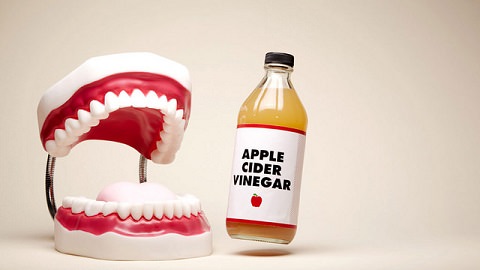
Image by Urban Wired
Will Apple Cider Whiten Your Teeth?
Unfortunately, it is a very weak option to try and use to whiten your teeth.
It seems after much research there are much safer natural remedies to try out.
Fruits and Vegetables
Some foods have been reviewed to offer more than just a health kick.
Strawberries, oranges, apples, celery and carrots have all been discussed to possibly whiten your teeth.
The whitening idea behind these foods is either one of two things:
- People use these foods based on their acidic nature or,
- The healthy attributes provide better oral health, generally.
Cost of Teeth Whitening
It’s good to know that there’s a teeth whitening option for most budgets.
Yes, if you have the money for professional teeth whitening, your results will most likely outshine that of teeth whitening toothpaste for a mere $10.
But there are whitening options that are still affordable and will give you reasonably good results.
Good Value, Better Results, Let’s Step it Up!
The middle ground is between two treatment options, Strips and Kits.
Whitening Strips
If you have a budget between $20 – $60, Whitening strips will offer great bang for your buck.
Results are reasonable too, with many swearing by this type of treatment.
Whitening Kits
If you want to spend between $60 – $150, you will find whitening kits are a preferred choice by many people.
Most brands will use the highest possible amount of HP, which is 6% or if the product uses Carbamide Peroxide, it will be capped at 18%.
Best Teeth Whitening Value For Your Money
For the money, Whitening Strips offer excellent value.
They are easy to use and have a no-fuss application process. It is a drawcard for many customers.
Whitening Kits are increasing in popularity and quality of product but are just a little more expensive than your teeth whitening strips.
What is the Best Teeth Whitening Treatment?
If money wasn’t an option and you wanted the best service available, professional ‘In-Office’ teeth whitening by your dentist is the No.1 treatment on the Australian market.
You will be blown away by the results and made to feel comfortable and safe during the process.
It is always recommended to research and find a dentist that has years of experience in teeth whitening and who has an excellent reputation in their community.
Dentists charge different rates for teeth whitening, but an average range is between $500 – $1000 for a complete teeth whitening service.
We have seen it advertised for as low as $250 and there are always specials cropping up when you search for teeth whitening if you are prepared to travel a little.
Celebrities can be charged way over this amount, into the thousands we’ve heard.
- Sensitivity
- Foods and lifestyles that cause stains
- General Advantages and Disadvantages
- Picking the perfect shade of white
- Aftercare Tips: Do’s and Don’ts
- Is it safe?
Let’s begin shining some light on these teeth whitening matters.
Teeth Whitening and Sensitivity
Most likely you’ve heard that there’s a certain amount of sensitivity with teeth whitening. And you’d be right.
However, this is really on a case by case basis.
Some people are lucky enough not even to experience any discomfort or pain.
Sensitivity can occur with all types of teeth whitening treatments, from strips to the ‘In office’ professional whitening systems that dentists use.
3 factors determine sensitivity when you whiten your teeth, generally. These include:
- How sensitive your teeth are to begin with
- Whether you have tooth decay or exposed root surfaces
- How much Hydrogen Peroxide is in the whitening gel
Because Hydrogen Peroxide is higher in percentage in professional whitening treatments, increased levels of sensitivity or pain are a likely possibility.
If you are planning to whiten your teeth, here are some common, sensitivity issues people experience:
- General sensitivity and pain to teeth and gums
- Slight burning to the gum edges
- Sharp shooting pains called ‘Zingers’
It is a shame, a lot of people decide not to continue with the rest of the whitening process due to sensitivity and ultimately forgo the results that can come.
The good news is that sensitivity should only last for a short period of time. And in most cases, it is not permanent.
There might be the occasional sensation and shoots of pain within the first 24 hours, but it should ease up once treatment stops.
How Can You Avoid Sensitivity?
There are 4 ways to prepare and avoid sensitivity issues from occurring:
#1 Make sure your oral hygiene is good – Regularly and consistently brushing and flossing your teeth will have an impact.
#2 Visit your dentist every 6 months – This will give you up to date info on the state of your mouth. Any problems can be looked at and fixed.
#3 Tooth related problems fixed – Decay and exposed roots can cause sensitivity and pain. It is something that should be attended to ASAP.
#4 Hydrate yourself – Drinking plenty of water will increase salvia levels and add protection generally to your mouth. It is the first line of oral defence!
Foods and Lifestyles That Can Cause Stains
When you decide to whiten your teeth you want to make sure you do everything to assist with the whitening process to achieve the best results.
Foods and Drinks
There are certain foods and drinks that do hinder the effects of most, if not all whitening treatments.
Here are 7 drinks and foods that you should stay clear of if you are serious about teeth whitening:
Coffee and Tea
One of the most common reasons for teeth staining.
Limiting consumption or removing it out of your daily routine when whitening your teeth is a recommendation by many dentists.
Making sure to drink a glass of water after a cuppa is a good routine to get into.
Red Wine
Because of the generally dark colour of red wine and how acidic it is, red wine is right behind coffee and tea in the staining department.
Try to avoid drinking red wine in the early stages after whitening your teeth; it can have profound effects on the results!
Soft drinks
These drinks should be avoided altogether.
They contain massive amounts of sugar that break down your teeth enamel and will stain them over time.
Pasta Sauce
Pasta is fantastic food, but those rich, acidic sauces can be problematic.
Putting pasta that’s in a tomato based sauce on hold while our pearly whites get brighter, might be a good idea.
Curries
A warm curry is a delicious meal.
However, ingredients in curries can stain very easily, such as turmeric for example.
Berries and Fruit Juice
Not only can these stain easily but like red wine, fruits are also very acidic.
They can affect your enamel, causing sensitivity issues as well.
Any Dark Liquid
Condiments like tomato sauce, soy sauce, even balsamic vinegar on a salad can reduce the shade of your smile.
Cutting down on these, sometimes tempting additions to your lunch or dinner can help the whitening process.
Smoking and Teeth Whitening
What we eat can have lasting effects on our mind, body and soul. However, the impact of smoking is worse than just the increased risk of cancer
Smoking or the use of tobacco products will prevent your teeth from shining, it’s almost a given.
Smoking while you whiten that smile of yours will just reduce and decrease the lovely outcome you can expect.
Quitting will not only increase the whiteness of your teeth in general, it should give you a helping hand in overall health as well.
If you are trying to quit and not sure how to or where to turn, here are a few links that are helpful to make the change you want.
Picking The Perfect Shade of White
Depending on how white you want to go will determine the product or treatment you decide on.
If you are just after a quick freshen up, then whitening strips or take-home kits will suffice in many cases.
It’s important to remember that using these take-home whitening products they can quite easily be misused.
It’s therefore sensible and highly recommend to read and follow the manufacturer’s instructions and guidelines to the tee.
Wanting That White Celebrity Smile?
Then a professional ‘In Office’ teeth whitening will likely be the treatment of choice.
Speaking to your dentist about your expectations is a good step in the right direction to achieving the desired results you are seeking.
Sometimes expectation and reality can be far apart. Not all of us are candidates for celebrity grade teeth whitening.
Your dentist will be able to recommend treatment options for you and how many times you should have the whitening process done.
Reasons to Whiten Your Teeth
Exploring teeth whitening options could be as simple as just wanting a whiter and brighter smile.
The ‘why’ is usually an important question when making a decision and teeth whitening is no exception.
5 Common Reasons Why People Choose to Whiten Their Teeth
- Unhappy with discoloured or stained teeth
- Wanting to feel younger and more vibrant
- Improve confidence and self-esteem
- Making a good first impression
- Looking your best for a special event
We’re sure there are plenty more personal reasons out there.
If you have a good one, please let us know and comment below. We are always interested in what our readers are thinking.
Teeth Whitening Aftercare: Tips That Are Easy to Follow
When you spend the money to whiten your teeth, you’ll want to keep the whiteness for as long as possible.
4 Easy Tips to Keep Your Teeth White For as Long as Possible
- Drink plenty of water. Hydration is key!
- Avoid drinks and foods that stain. Ask yourself would it stain a white shirt?
- Keep up with your dental hygiene routine, a soft toothbrush is a must
- Avoid smoking for at least 48 hours after any treatment.
These tips could be challenging but it’s worth it. Just think of the sustained results.
Is Teeth Whitening Safe: What’s In the Gel?
You’re not alone if you’ve got a few doubts when it comes to teeth whitening and the question “Is it safe?”
It is true, there are a few side effects, most commonly sensitivity during and after the whitening process.
Though all in all, teeth whitening as gone through rigorous testing and is a safe treatment to experience.
Australian law limits the amount of Hydrogen Peroxide or Carbamide Peroxide used in whitening treatments available on the Australian market.
All products sold in Australia must abide by these rules.
You therefore only have one question to answer, “Which whitening treatment will you decide on?” We hope this article has helped answer this for you.
Conclusion
There’s definitely a huge choice when it comes to teeth whitening in Australia.
A treatment option for almost every budget, teeth whitening has the ability to improve our self-esteem and make us feel almost like a new person.
However, not all whitening treatments available in Australia offer the same results. Some can be a complete waste of money!
The quality and what you expect is a lot of the time related to how much you are willing to pay for something.
It is worthwhile to understand why you want to whiten your teeth in the first place and what stains you are trying to remove? Are they intrinsic or extrinsic?
We recommend speaking to your trusted dentist about these questions so that you can make informed teeth whitening decisions and be happy with the final outcome.
Have you used a teeth whitening product recently that’s given great results?
By Anthony Cade
Created at July 24, 2018, Updated at January 25, 2025


